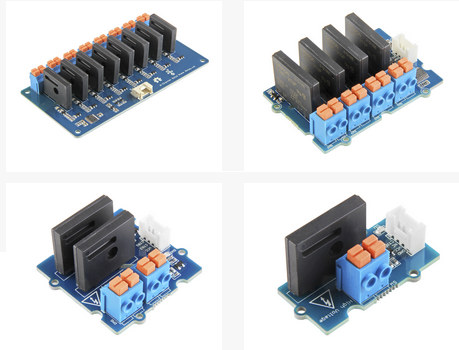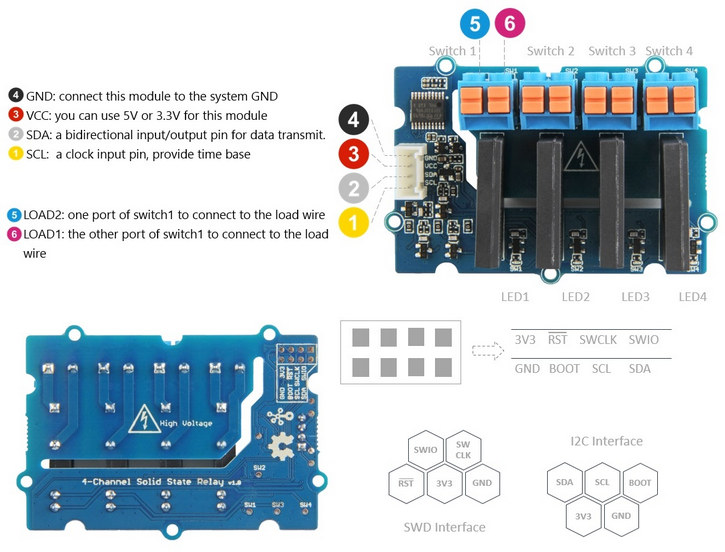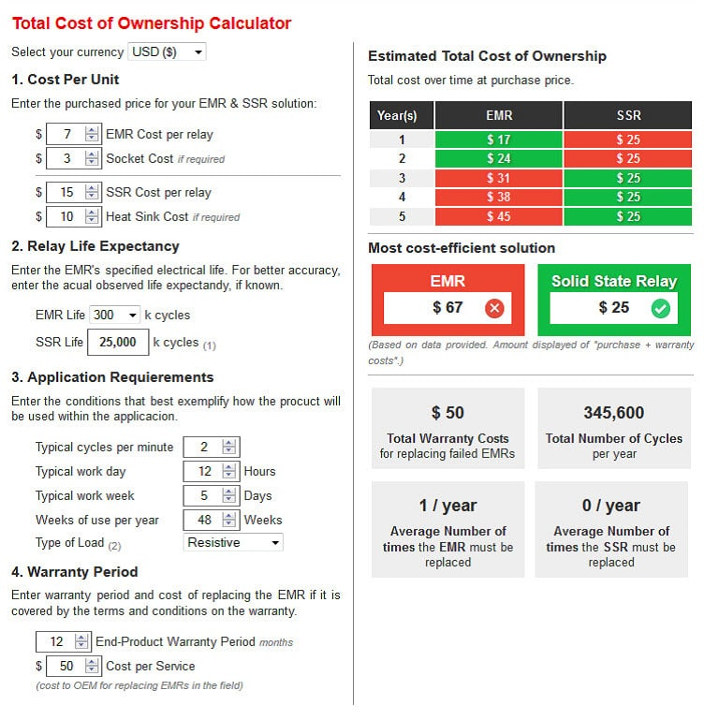I’ve been playing with products or boards with AC relays for a while, but I never really cared to check about different types of relay. So far, all platforms I tested came with largish blue or black boxes which are SPDT electro-mechanical relays.
But as I browsed through Seeed Studio, I found some weirdly-shaped relay modules, much thinner than usual, and fairly more expensive.

The main difference is that those are solid state relays, and the boards also include a grove connector that allows microcontrollers or other boards to control the relay over a simple I2C connection. The modules are available in 1-channel, 2-channel, 4-channel, and 8-channel versions with the following specifications:
- MCU – STMicro STM32F030F4P6 Arm Cortex-M0 micro-controller
- Relay – Omron G3MC202P module
- Input Voltage – 4~6V (Rated Input Voltage: 5V)
- Load Voltage Range – 75 to 264 VAC 50/60 Hz
- Rated Load Voltage – 100 to 240 VAC 50/60 Hz
- Load Current – 0.1 to 2 A
- Leakage Current – 1.5 mA max. (at 200 VAC)
- Zero cross support
- Insulation Resistance – 1,000 MΩ min. (at 500 VDC)
- Dimensions & weight
- 1-ch – 40mm x 20mm x 25mm | 131 grams
- 2-ch – 40mm x 40mm x 25mm | 138 grams
- 4-ch – 60mm x 40mm x 25mm | 151 grams
- 8-ch – 120mm x 60mm x 25mm | 255 grams
- Temperature Range – -30°C to 80°C (with no icing or condensation)
- Operating Humidity – 45% to 85%RH
- Certification – UL / CSA

Some of the advantages of solid state relays include a smaller footprint, silent operation (electro-mechanical relays click when operated), faster switching speeds, a longer useful life, and improved safety.
However, they do product more heat when closed, and when open there’s some reserve leak current that could cause low power devices to turn on. They also only work for AC load, the models are limited to only 240V/2A (at 25°C) and 240V/1A (at 40°C), and they cost much more than “traditional” SPDT relays. Arrow has published long post explaining the differences between solid state (SSR) and electro-mechanical (EMR) relays, and with regards to price while SSRs cost more much, their longer lifetime means they end-up being cheaper over the years due to lower maintenance costs.

You’ll find instructions to use the Grove I2C solid state relay modules with Arduino, Raspberry Pi, BeagleBone, Wio, and LinkIt ONE boards in the Wiki.
Seeed Studio Grove solid state relay modules are selling for $14.90 (1-ch) up to $79.99 (8-ch). For comparison, the company also offers a Grove I2C 4-channel SPDT relay module for just $9.99, with relays that can handle 250V/10A.

Jean-Luc started CNX Software in 2010 as a part-time endeavor, before quitting his job as a software engineering manager, and starting to write daily news, and reviews full time later in 2011.
Support CNX Software! Donate via cryptocurrencies, become a Patron on Patreon, or purchase goods on Amazon or Aliexpress





I can see that the clearances are too small on the PCB on the one nearest the open source logo. Not legal to use. People need to be careful when playing with mains too.
It’s input and output of the same wire, I’d find it surprising that there is a requirement for clearance on a same wire, or it would mean that you’re not allowed to connect these two ends together, which is what the relay does. In the worst case it will maintain a contact when it should not, just like a software bug would do, or any spurious contact on the chip would do.
The Arrow analysis is a nice sales and marketing pitch and is a little biased. Solid state relays are fussy about the load they are switching. Transients from inductive or capacitive loads that won’t bother a mechanical relay can burn out an SSR. Safe thing to do with an SSR is assume the safe load is half the rated load.
Also mosfets and bjts are most of the times suitable for many designs and can replace relays; which means that any switching device has its application and can perform better that the other. I mean if the design is done properly there shouldn’t be a dilemma which one to use.